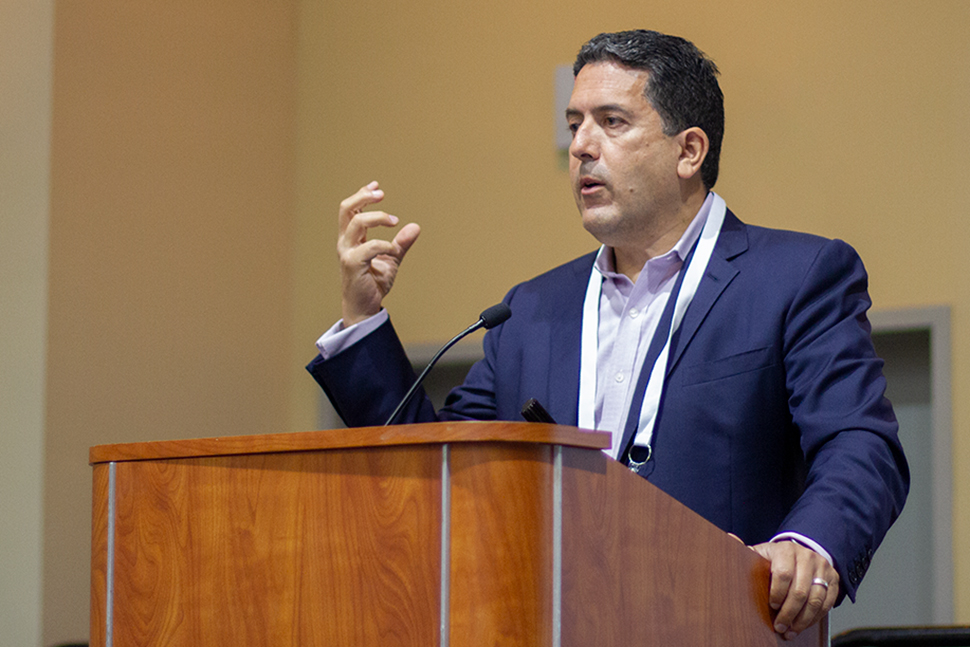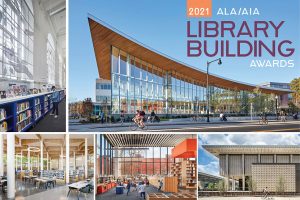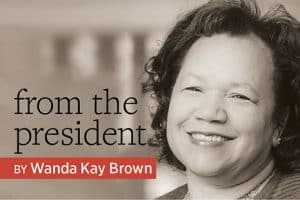
Often, library projects begin with a list of constraints: A budget, square footage, and what needs to fit into it, according to architect Joe Huberty of Engberg Anderson, LLC. This process results in cookie-cutter libraries that are hard to mess up, but “it’s also hard [for them] to really resonate with a particular community.”
At “Ethnographic Design: Creating Culturally Centered Library Spaces,” Huberty and David Vinjamuri, adjunct associate professor of marketing at New York University, discussed how they apply ethnographic design in new libraries and remodeling projects. They were joined by community librarian Julie Retherford from Chetco Community Public Library in Brookings, Oregon, who shared her experiences from a recent renovation. The panel was part of the American Library Association’s 2022 Annual Conference and Exhibition in Washington, D.C. on Monday, June 27.
“The language people speak when they’re trying to find a program, when they’re interacting with your space, it’s the language of retail,” Huberty said, noting that library users are well versed in the design language of retail because everyone interacts with it so often; when people come into a library space, the last place they were (other than work) was probably a supermarket, Anthropologie, or Home Depot, he said.
But how can libraries meet needs that users might not express outright? Vinjamuri offered these tips, based on behavioral lessons from marketing research:
- Observation is better than opinion.
- Your library is a different place at different times.
- Your most important patrons may not be in the library.
Observation can be as simple as tracking where people are throughout the day. “Are people doing what we think they’re doing?” Vinjamuri asked. “If the library’s not accomplishing your strategic objectives it’s because your space is not telling people to do those things.” Tracking how spaces within the library are being used can help illuminate ways to engage the community, encourage an exchange of ideas, and reveal unmet needs.
Retherford shared an example from her library’s recent renovation, noting that her library had a teen area—marked by a neon sign that said “Teens”—but it was underused. Teens did not feel especially welcome in the library because most of the space was focused on serving older adults and people with children, she said. Also, because teens are at school most of the day, the space had to be flexible enough to meet the needs of other users, like freelancers and people who work remotely.
Not all space uses are compatible. A young child and an older adult who are both quietly reading are not in conflict with each other, Huberty observed, but an interactive storytime and a jobseeker participating in an interview cannot function in adjacent spaces. In Retherford’s library, there was often noise traveling through common areas, causing conflict with a subset of the population that viewed the library as a sanctuary. They added a glass room for quiet reading. The people who often complained about noise “found it very quickly and use it regularly,” she said.
Ensuring people can find and interact with a space as intended often comes down to clear wayfinding. “Most of the signage that’s hand-produced in a library is completely ineffective,” Vinjamuri said, or even passive-aggressive. He recommends adopting a consistent taxonomy for signage: look at shape, color, and position.
People sometimes behave in unpredictable ways, so “people-first is an essential element” of design, Huberty said. And what about the people who aren’t coming to the library? Said Vinjamuri: “You’re often not going to find these people if your library isn’t designed for them.”


